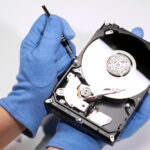In this comprehensive guide, we will explore the best ways to delete temporary files in Windows 11, ensuring optimal system performance and a clutter-free computing experience.
Understanding the Importance of Deleting Temporary Files:
Temporary files, generated during various system and application processes, serve a purpose in facilitating smooth operations. However, when left unchecked, these files can accumulate and adversely affect your system’s performance. Here are some reasons why deleting temporary files is crucial:
- Storage Optimization: Temporary files can occupy a significant amount of storage space over time, leading to insufficient free space for essential tasks and potentially slowing down your system.
- System Resource Efficiency: Unnecessary temporary files consume system resources such as RAM and CPU power. By deleting them, you free up these resources for more critical functions, enhancing overall system efficiency.
- Preventing Fragmentation: The presence of numerous temporary files can contribute to disk fragmentation, impacting file access times and slowing down your system’s responsiveness.
Best Ways to Delete Temporary Files in Windows 11:
-
Table of Contents
ToggleUtilize the Built-in Disk Cleanup Utility:
- Access Disk Cleanup: Press the Windows key, type “Disk Cleanup” in the search bar, and select the corresponding utility. Alternatively, right-click on the drive you want to clean, choose “Properties,” and then click on “Disk Cleanup.”
- Select File Types: Disk Cleanup will analyze your system and present a list of files you can delete. Check the boxes next to the types of files, including temporary files, and click “OK.”
- Confirm Deletion: After selecting the file types, click “Delete Files” to confirm. Disk Cleanup will efficiently clear out the selected temporary files, optimizing your storage.
-
Use Storage Sense for Automated Cleanup:
- Access Storage Settings: Press the Windows key + I to open the Settings menu. Navigate to “System” and then “Storage.”
- Enable Storage Sense: Toggle on “Storage Sense” to enable automatic cleanup. Click on “Configure Storage Sense or run it now” to customize settings such as the frequency of cleanup and types of files to delete.
- Run Storage Sense: Click on “Clean now” to initiate an immediate cleanup based on the configured settings.
-
Manual Deletion of Temporary Files:
- Navigate to Temp Folder: Press the Windows key + R to open the Run dialog. Type “%temp%” and press Enter. This opens the Temp folder containing various temporary files.
- Select and Delete: Press Ctrl + A to select all files and folders in the Temp folder. Press the Delete key to remove them. Some files may be in use and might not be deleted immediately, but you can skip them.
- Empty Recycle Bin: After deleting the files, empty the Recycle Bin to free up space on your system completely.
- Use Command Prompt for Advanced Cleanup:
- Open Command Prompt: Press the Windows key, type “cmd” in the search bar, right-click on “Command Prompt,” and choose “Run as administrator.”
- Run Cleanup Commands:
rd /s /q %temp%
del /f /q C:\Windows\Temp\*
- Confirm Deletion: Press Enter to run the commands. These commands will delete the contents of the Temp folders, freeing up additional space.
-
Third-Party Tools for Streamlined Cleanup:
- CCleaner: Download and install CCleaner from the official website. Open CCleaner, select the types of files you want to delete, and click on “Run Cleaner” for an efficient and streamlined cleanup.
- BleachBit: Another effective tool, BleachBit, offers a range of cleaning options. Download and install BleachBit, choose the types of files to delete, and click on “Clean” for a thorough cleanup.
-
Clear Browser Cache and Temporary Files:
- Google Chrome: Click on the three dots in the top-right corner, go to “More tools,” and select “Clear browsing data.” Choose the time range and types of data to clear, then click “Clear data.”
- Mozilla Firefox: Click on the three horizontal lines, go to “Library,” and select “History.” Click on “Clear Recent History,” choose the time range and types of data, and click “Clear Now.”
- Microsoft Edge: Click on the three dots, go to “Settings,” and choose “Privacy, search, and services.” Under “Clear browsing data,” click “Choose what to clear.”
Conclusion:
A Cleaner, Leaner Windows 11 Experience
By following these best practices for deleting temporary files in Windows 11, you can ensure that your system remains optimized, responsive, and clutter-free. Regular cleanup not only frees up valuable storage space but also contributes to a smoother computing experience. Choose the method that best suits your preferences and needs, and make temporary file cleanup a routine part of your system maintenance. Experience the benefits of a cleaner, leaner Windows 11 environment, enhancing both performance and efficiency.






